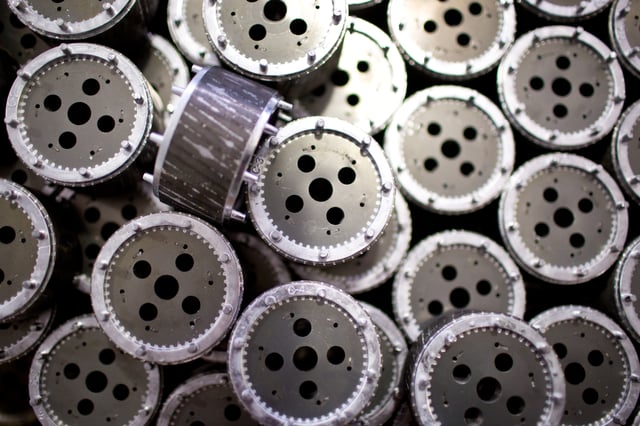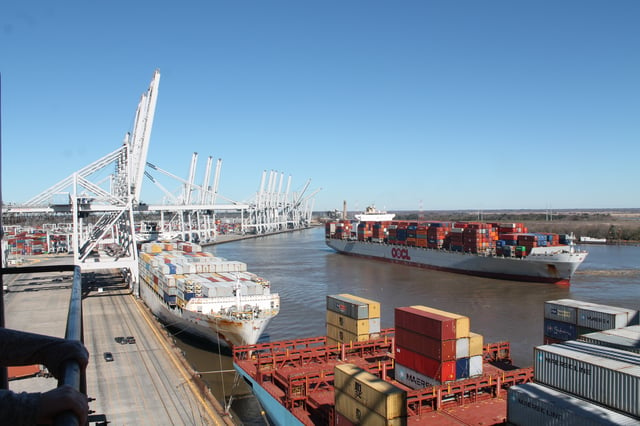Let’s say you’re a sourcing manager for a manufacturer. The company’s part/product is in production and things are going well. In fact, they’re going great! Things are going so great that you’re starting to get a little concerned. What happens if one of your machines goes down, you run out of a key material or some disaster — natural or man-made — affects your production?
You, my friend, are out of luck.

Maybe you’re thinking, “That’s okay. I’ll build the redundancy I need by off-loading some of this production to a contract manufacturer.”
Sounds simple, but there are more than a few factors to consider when shopping around for production and supply chain redundancy. One of the most pressing questions is whether you should stay domestic or go global. While there is no single best answer, here are some items to consider:
1. Onshore What Makes Sense
Seriously? Yes! Sometimes you are best served by keeping production in the U.S. Maybe you have parts produced overseas that can be produced at a reasonable cost in the United States. Should you bring that production back? Examine everything and see what makes the most financial sense for you.
2. Offshore What Makes Sense
See above. While your current supplier has been loyal for years, if you are losing your competitive advantage in the marketplace and you need to reduce cost (or improve quality) to regain your edge, it could be time to explore your offshore options.Here's a quick list to get you started:
ACTION ITEMS
- It's time to do research. There are compelling cases to be made for every location.
- Use your data. Pull together an accurate record of your current costs to compare against the projected costs where you hope to source.
- Get a complete picture of the cost of doing business from material and manufacturers to insurance and legal costs.
- If you’re sourcing from overseas you must factor in custom duties, excise taxes and other fees.
- You’ll need to speak with shipping and logistics experts to get your product to you when you need it.
- As with every financial decision, track your expenses and beware of cost creep.
3. Two Ports Are Better Than One
If your supply chain is 12,000 miles long because you leverage the efficiencies of a global manufacturing community, chances are you ship to the same port every time. During some peak seasons like the ramp up to and post-Chinese New Year, you may face delays — sometimes significant delays. What to do? Implement a strategy where you move some of your containers through East Coast ports (or Southern ports like Houston) to diversify your supply chain.

Garden City Terminal, Port of Savannah
4. Three Suppliers Are Better Than One
For years “diversifying your supply chain” meant dual sourcing. Splitting the volume between a couple of suppliers prevents disruptions in your supply chain and gives you enough volume to leverage both. But if you have the volume, how about a plan C? Keeping your production lines running sometimes requires a little “out of the box thinking.” So, if two suppliers are better than one, maybe, just maybe, three suppliers are better than two.
5. Four Countries Are Better Than…
If you are a domestic manufacturer you may have already moved some production offshore. Much has been written about the rising cost of Chinese labor and tariffs. While it's true for many manufacturing disciplines (Electronics, SMT, High Precision Die Cast, to name a few), the reality is that it still is more competitive to manufacture some items in China. However, as costs rise, other global manufacturing centers have emerged and become highly competitive. Countries like Vietnam and India are routinely producing world-class, critical-to-function engineered products while smaller countries like Costa Rica are taking advantage of the current world trade status. What does that mean for you? It means that now, along with the U.S. and China, you can add many of these other countries to the list of global contract manufacturing centers.
It is possible to find contract manufacturers that will handle all the details for you. Some only work with one material, plastics for example. But others have experience in multiple materials and industries, along with the facilities, expertise and capacity to support production, shipping, logistics...the whole schmear.
Managing a complex supply chain successfully takes a continuous improvement approach. There are so many variables in play. Sometimes it makes sense to engage someone to keep eyes on all the moving parts so that you can focus on what you do best — growing your business.
Read more:




.jpg?width=176&height=56&name=MR_associatedNetwork_logo%20(1).jpg)